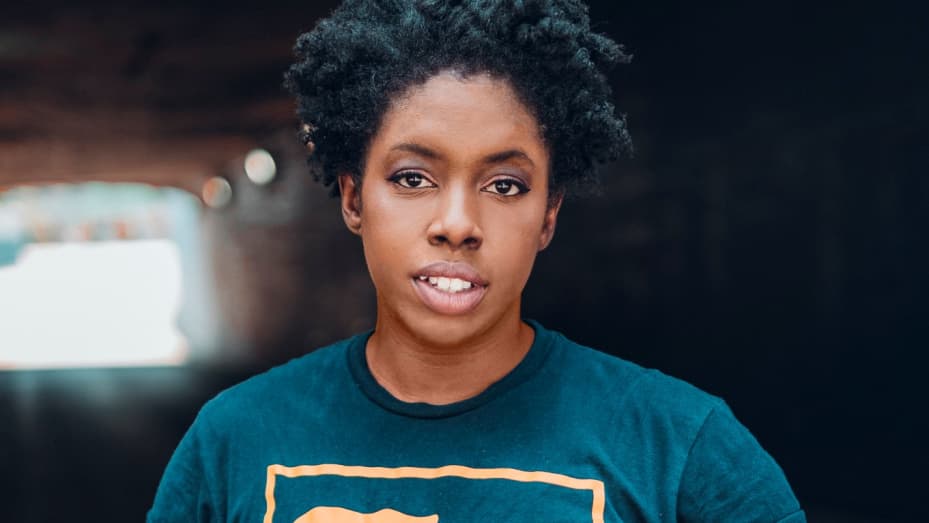04/02/2022 ‘I had $10 in my bank account’: This 36-year-old went from living paycheck to paycheck to making over $109,000 selling NFTs

In 2021,Brittany Pierremade over $109,000 selling nonfungible tokens, or NFTs, of her photography and flipping other NFTs she bought for a profit.
But before that, Pierre was struggling to pay rent on her Chicago apartment or afford groceries and bus fare, she tells CNBC Make It.
Her financial situation was very “touch and go,” Pierre, 36, says. She lived paycheck to paycheck and “got pretty depressed.”
In March, Pierre learned about nonfungible tokens, or NFTs. Her friend andfellow artist Elise Swopeshad just sold an NFT of her work forover $17,600, inspiring Pierre to try and do the same. In addition to asking Swopes for guidance, “I dove straight in, just doing a YouTube and a Google deep dive for a couple of days.”
One month later, Pierre started to sell her first NFTs and was soon selling pieces for a few hundred dollars each — more than her physical art earned her, she says.
“It was real hard to do $50 photoshoots, trying to peddle $30 prints. I’d have bookings here and there, but it wasn’t sustainable,” she says. “That first couple of $200, $300 [NFT] sales was a lot for me. That’s exactly what I needed to pay rent.”
“Las//Abuelas” by Brittany Pierre.
Courtesy of Brittany Pierre
As she made more money, Pierre was able to pay her bills and live more comfortably, but also donate to organizations and invest in other artists’ NFTs — some of which she’s flipped for a return.
“Last year has been the first year that I could live completely abundantly, more with my heart, than I ever have been able to,” she says. “I’ve never had a job over $15 an hour, and last year, I was able to make a little over $100,000.”
How it started
When starting to learn about NFTs, Pierre noticed a few barriers to entry: For most of the top platforms, creators needed to apply or be invited to list their artwork. Once that happens, creators must pay gas fees to mint their NFTs, which can be difficult to afford.
Minting an NFT is the process of representing the asset on the blockchain. It allows NFT owners to both prove that they own the asset and be able to sell it if they want. But to mint an NFT,creators must pay what’s called a gas fee, which can cost hundreds of dollars during times of high congestion.
With the help of a few friends who connected her, Pierre wasinvited to NFT marketplace Foundationin March byphotographer Zak Krevitt. Another artist raised funds to pay Pierre’s gas fees for her first couple of pieces so she could mint her work, she says.
At the time, “I probably had like 10 bucks in my bank account,” she says. “I think fees [were] about $250.”
This process of onboarding and helping fellow artists is common in the NFT and widerWeb3community. “That is one thing about this space: If you have a question, somebody is going to answer it,” Pierre says.
“Crowned” by Brittany Pierre. This photograph of Alii Michele is part of Pierre’s “BLACK//Beauty” series.
Courtesy of Brittany Pierre
Through her street style and portraiture photography, “it’s mostly Black women and men that I try to uplift,” Pierre says. “When you look up ‘beautiful person’ on Google, you normally see a white person. So I wanted to put Black people on the blockchain so we can solidify that. I want to highlight the Black experience.”
Pierre’s first sales occurred aftera notable NFT collector known as Weeshsaw her art on Twitter. “After that, I went all in,” she says.
Pierre had found another day job, but she decided to quit and pursue NFTs full-time, she says.
How it’s going
The income was life-changing for Pierre.
“At first, it started with me paying rent on time and in full without having to make payments. Then, I was able to get groceries — I was living on ramen, ground beef, tuna cans and water for a very long time. I was able to fill my fridge, which I’ve never been able to do on my own,” she says.
Beyond necessities, Pierre has been able to treat herself. She has bought more film photography equipment, she says, and splurges every once in a while on Nikes. Additionally, Pierre has been saving to buy a Tesla and a place of her own.
“All Aboard” by Brittany Pierre. This photograph is part of Pierre’s “Chicago: Black+White” series.
Courtesy of Brittany Pierre
Overall, her “quality of life” has improved, she says. And she’s able to help others. If her mom, sister, niece or nephew need anything, Pierre can buy it for them. She also donates to organizations she’s passionate about, she says.
Pierre also prioritizes giving back to the NFT community by onboarding other women, inviting them to Foundation and paying their gas fees, she says.
‘NFTs can help marginalized people’
Pierre sees cryptocurrency and NFTs as a way to build generational wealth, since they allow her to invest and earn money without dealing with traditional financial systems.
“I definitely think that not only NFTs, but crypto in general, can help marginalized people, especially the Black community,” she says.
Pierre has been successful in the space, but what she has accomplished isn’t necessarily easy or typical. When it comes to investing in cryptocurrency, financial experts recommend being careful, understanding the risks andtaking time to researchbefore buying in.
Nonetheless, she says, “I do truly believe that crypto and NFTs can be the path of real financial freedom and freedom from racist systems in government and banks.”
 (0)
(0)
 (0)
(0)